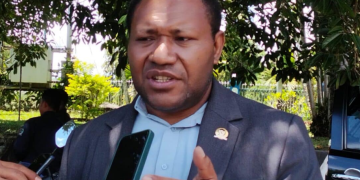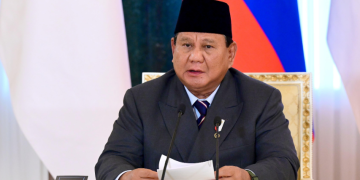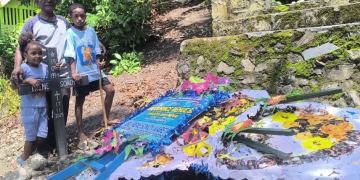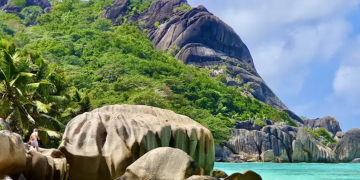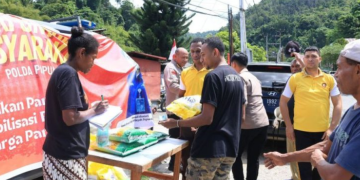A peaceful protest led by Greenpeace Indonesia took place during the Indonesia Critical Minerals Conference & Expo at Hotel Pullman in Jakarta. The demonstration aimed to draw attention to the environmental and social impacts of nickel mining and downstream processing, particularly in Papua’s Raja Ampat region.
As Deputy Foreign Minister Arif Havas Oegroseno delivered his opening remarks, several Greenpeace activists and four young Papuans interrupted the session by unfurling banners and raising their voices against the mining activities in Papua. “The government must take responsibility for the environmental destruction in Raja Ampat. Save Raja Ampat,” one of the Papuan youth declared while holding a banner.
Three prominent yellow posters with bold black lettering were displayed inside the conference hall. The messages read: “What’s the true cost of your nickel?”, “Nickel mines destroy lives”, and “Save Raja Ampat from nickel mining.” Similar messages were also showcased in the exhibition area outside the main conference room.
Greenpeace Indonesia’s Global Head for Forest Campaigns, Kiki Taufik, stated that the group deliberately chose this moment to protest, as key government officials and major nickel industry stakeholders were present. He emphasized that environmental degradation from nickel mining had already affected several regions, including Halmahera, Wawonii, and Kabaena.
“Raja Ampat is now under threat. Mining has started on five islands, and this area is not only a global geopark but also home to 75 percent of the world’s best coral reefs. It is being destroyed,” Kiki said during a press briefing at the venue.
Kiki warned that energy transition efforts must not come at the expense of the environment or local communities. He stressed that the people of Raja Ampat have repeatedly suffered due to mining operations. “Their land is damaged, their livelihood lost, and they are left with no space to live or to fish,” he added.
Greenpeace’s investigation last year revealed mining activities on Gag, Kawe, and Manuran islands. These islands fall under the category of small islands, which are legally protected under Law No. 1 of 2014 on Coastal and Small Islands Management. According to Greenpeace’s analysis, over 500 hectares of native forest have been cleared across the three islands, contributing to coastal sedimentation and threatening marine ecosystems.
In addition to these islands, Batang Pele and Manyaifun—located roughly 30 kilometers from Piaynemo, a renowned karst islet featured on Indonesia’s Rp100,000 banknote—are also at risk. Greenpeace has called on the Indonesian government to revoke all mining permits across the five affected islands.
Ronisel Mambrasar, a youth activist from Papua and member of the “Jaga Alam Raja Ampat” alliance, voiced his concerns through a written statement. He claimed that nickel mining had disrupted community life and sparked tensions in previously peaceful villages. “In my hometown, Manyaifun, and on Batang Pele Island, nickel mining is threatening our existence,” Ronisel said.
Deputy Minister Arif Havas responded by downplaying the demonstration. “It’s a normal protest. No problem. Environmental issues are a shared concern. We also want a mining system that is environmentally friendly and socially responsible,” he commented.
However, Arif criticized the method of protest, calling it immature. He suggested that meaningful policy change would be better achieved through constructive dialogue and strong arguments rather than public disruption.
Despite differing views, the protest highlighted an ongoing debate over how Indonesia can balance its ambition for energy transition with its duty to protect the environment and indigenous communities.


